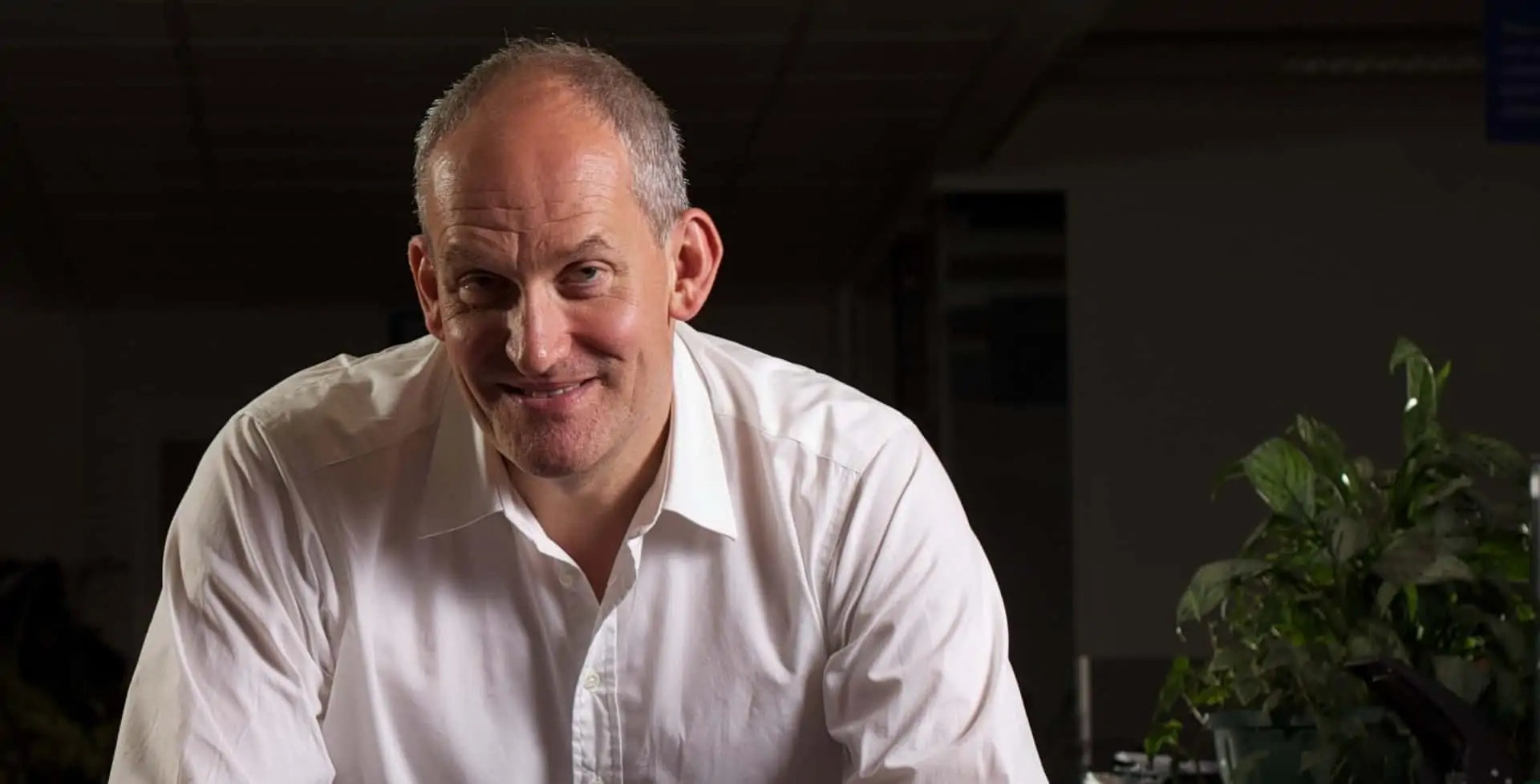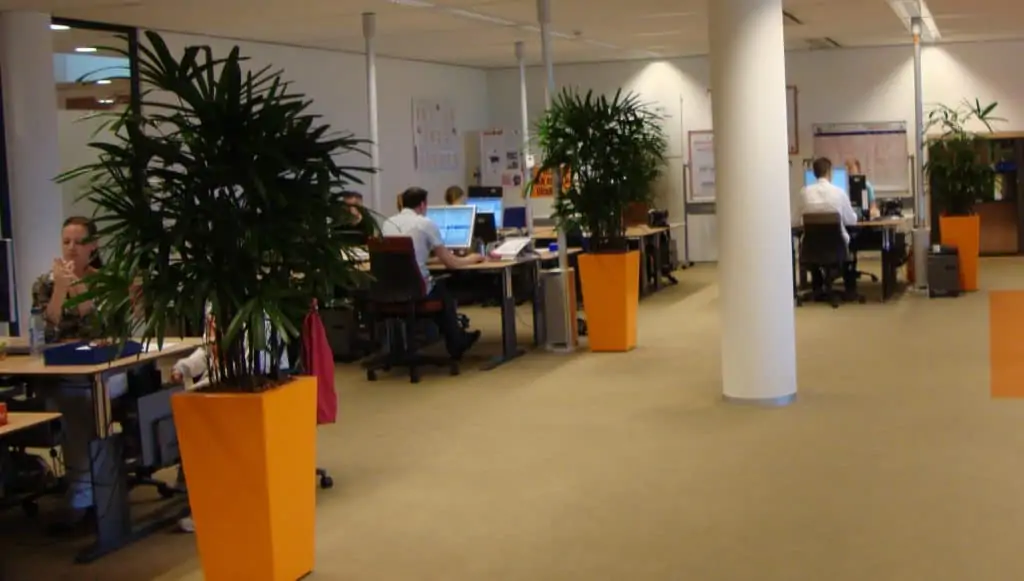Productivity expert and workplace psychologist Dr. Craig Knight
To understand the work of productivity expert, Dr. Knight, imagine a dull office block on a Parisien Industrial Estate. Walk up some stairs, and you can admire the portraits team members have done of each other. When reaching the top, you can be transported from a space decked out as per the Moulin Rouge in feathers and pink velvet to another with murals of the Serengeti. These offices are full of happy people, productivity is high the company is an Identity Realization (IdR) success story.
The offices won’t win design awards, the drawings won’t be moving to the Louvre anytime soon, but what they achieve is a space people love and love to work in. It is their own creation. And happy people mean higher productivity, greater wellness.
Dr. Craig Knight
Craig is a Chartered Psychologist and describes his job as getting to know people better than they know themselves. He says that the principle of people being a company’s best asset is entirely right, but to get the best out of your team, you need a psychologist. It worries him that there are so many people without sufficient qualifications working in the same space.
He wasn’t originally in psychology, but his interest in it, and subsequently productivity, began, as many good things do, over a pint with a friend. It was to spark an entire career.
Later, he was in the offices of NORWEB, the North Western Electricity board. He asked the facilitator how they worked out the layout of their office space. He learned that NORWEB took the number of polystyrene tiles on the ceiling and allocated eight tiles per person. Craig thought – there has to be a better way to allow people to live and work than this.
He studied at the Open University, then did his Masters and finally a Ph.D. at Exeter in Organizational and Social Psychology. By that time, he had already spent five years studying psychology and office space, so while still at Exeter in 2003, he set up Prism, which later rebranded as IdR.
Craig works with a network of global universities and leading organizations such as Deloitte. This means he can assemble a team of a size suitable to help any organization from around 25 people upwards in size to address a variety of issues including productivity and culture. Their work is always both data-driven and evidence-based. It is regularly published and featured on both BBC1 and two and Channel 4.
How do companies benefit from IdR?
IdR improves organizational effectiveness. They achieve increases in productivity between 32-40% and well-being by 45%. In the course of their work, they may also cover candidate assessment and development, executive coaching, interview training, leadership development, and organizational change. However, it is the overall wellness and productivity which are central themes.
When a company approaches IdR to help, they like to start by interviewing the person who called them in, learning more about them and their perception of where problems lies, why people are not happy or productivity is low.
The next step is to ideally talk to everyone in the organization from top to bottom. After this, they carry out a survey on cultural satisfaction. By this time, the gaps in beliefs between the top and the bottom are, and it is possible to suggest strategies to bridge them. Sometimes their impressions from the one-to-one chats suggests one way forward and the surveys another, in which case they try both.
What causes productivity issues?
Despite all the changes in the world, business has developed relatively little. Two of the most significant areas of this are around office design and management.
Office Design
Craig cites F W Taylor’s 1911 book, which sets out the concepts underlying Six Sigma and how open-plan office began in the Victorian times as just two indications of how we are using outdated ideas.
Many organizations believe in a lean, clean workplace. Craig gives the example of the Shepherd Bush BBC complex, built by Balfour Beatty, where it was only a partial joke when people were instructed to remove pot plants from the shiny starkness.
Craig’s data proves that if you provide people with a place rich with personality and color, productivity increases. We don’t put animals in sterile environments to thrive, and humans are no different.
So, to increase productivity, should we all be rushing out and telling decorators to hang pictures and paint bright colours or create fashionable workspaces as many new companies are doing?
Absolutely not, according to Craig. You will have far happier people by allowing them to sort out the décor and what they work in themselves. It may not look as smart, but the results will be excellent. Better still is to give people access to designers’ expertise, but this comes with a caveat. Most designers claim to consult people. Craig advocates that the people using the space develop their ideas on what they want and simply use the designers’ expertise to achieve it.
It is not the design that is the problem; it is how it is imposed and the emphasis and spending involved. If, for example, people with low pay are in glorious offices, chosen by management, full of expensive and rare pot plants, they will be a great deal less happy than they would be sitting around on packing cases with chipped mugs.
-
Clive Chilvers Photography -
Credit Dr Knight
Management Style
The most damaging issues IdR finds are nearly always with over-controlling managers or management. Many of these still believe the Frederick Taylor motivational theory, i.e., that what motivates people is money, “a fair day’s pay for a fair day’s work,” and that pay should be adjusted daily according to productivity.
The result is toxic. No one likes over-bearing people interfering in their lives. 70% of people leave their jobs because of issues with a manager.
Craig says that too many managers or people in management have limited ability and a lot of power. At the worst end of the scale, he cites micro-managers who are six sigma black belts and can obstruct entire organizations and annihilate productivity levels. He recommends these people are moved to a different role.
One of the biggest challenges is when that person is the business owner, and he has to tell them that their productivity problem lies with their other controlling habits. They then have two choices, to change or to go on as they are. Some do change. As Craig points out, Steve Jobs recognized it and changed.
Poor Practices in Remote Working Management Management
I asked Craig how companies were coping with remote management, and affecting their own productivity. He says he has heard of so many horror stories. Some managers are castigating people in their own homes for having small children in the background or smoking on zoom calls; it is absolutely none of management’s business what people do in their own homes.
Many companies are also imposing what they think will work instead of consulting and finding out what people want. Jolly, over-regular check-ins by management are a good example. These quickly become onerous, and people resent being checked up on. It becomes seen as interference.
Craig says that people actually want and need three things. The first is access to people they work with, not management. They need to feel part of that team and within it. They also need to do it in their way, agreed between themselves, not have it imposed on them by other people’s rules and regulations.
The second is autonomy as to when they do their work. Wise companies are not trying to impose set hours of work, for example, but looking at results instead. Autonomy is key.
The last point is one for the future. Craig explains that people will have naturally built up their own new support network at home, of an individual mix of friends, family, and neighbors during this time of home-working.
However, if organizations seek to cut this off when people go back to the office, with draconian rules, such as banning Facebook usage, it would produce the same isolation as people suffered when working at home in the early stages.
Overall
Craig admits that many organizations, while quick to hire an architect, for example, to design a building, still do not accept they need a psychologist to bring out the best in people. The result is that a few people decide what goes on, they infantize their team, and 70% of it is toxic to the workplace.
Whatever companies do, it has to be for the good of the majority. Like all new ideas, not everyone likes to hear them, which is the biggest challenge for IDR. But never-the-less, Craig’s passion and love for what he achieves, include his joy in wonderful reproduction Moulin Rouge and the happy people within it.
You might also enjoy reading about Carlene Jackson whose success is very much people driven




